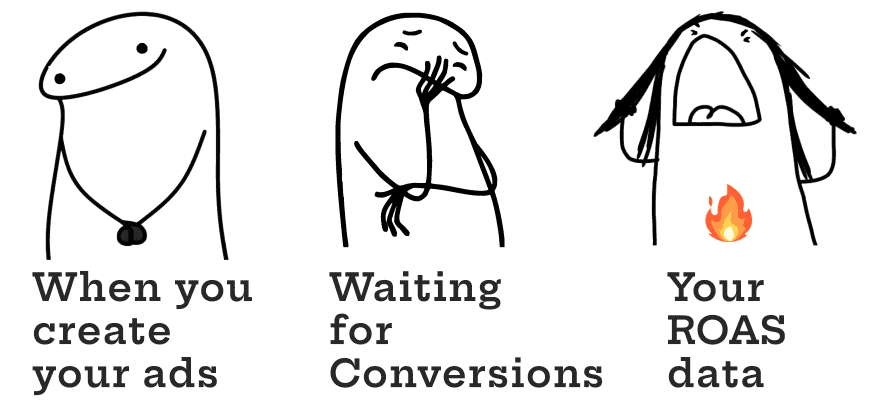Awareness,
Conversation,
Conversion!
In that order!
Social Media Marketing
Every piece of content must deliver a business goal!
We help build relentlessly relevant brands with the right approach of offering value added content that creates meaning full connections that lead tangible actions like purchases or leads.
Get Started
Consider this
80%
Of People Have Purchased a Product or Service as a Result of Content Marketing, New Survey Finds
We’re grateful to have worked with some incredible clients.















Featured Work
Our Approach
- Know your audienceGet a free Social audit today
- Content with intentGet a free Social audit today
- Focus on value-driven contentGet a free Social audit today
- Right message at the right timeGet a free Social audit today
- Ideal content frequencyGet a free Social audit today
- Track performance metricsGet a free Social audit today
Our services
PLATFORMS WE WORK WITH
Testimonials
FAQ's
Latest Trends in Social Media Marketing
Social media is evolving rapidly, and staying updated with the latest trends is crucial for businesses to thrive. Here are some of the key trends shaping the social media landscape:
Video Content Dominance
- Short-form video: Platforms like TikTok and Instagram Reels continue to reign supreme.
- Long-form video: YouTube remains a powerful platform for in-depth content.
- Live video: Offers real-time engagement and interaction with audiences.
The Rise of Social Commerce
- Shoppable posts: Directly selling products through social media platforms.
- Influencer marketing: Collaborating with influencers to promote products.
- User-generated content: Leveraging customer-created content to drive sales.
AI and Automation
- AI-powered content creation: Generating ideas, writing copy, and designing visuals.
- Chatbots and virtual assistants: Enhancing customer service and engagement.
- Data analysis: Using AI to gain insights into audience behavior.
Community Building and Engagement
- Interactive content: Encouraging user participation and feedback.
- Authenticity and transparency: Building trust through genuine connections.
- Customer-centric approach: Prioritizing customer needs and experiences.
Emphasis on User Experience
- Mobile optimization: Ensuring seamless browsing on smartphones.
- Fast loading times: Improving website and app performance.
- User-friendly interfaces: Creating intuitive and easy-to-navigate experiences.
Other Notable Trends
- Social SEO: Optimizing content for search engines within social platforms.
- Micro-influencers: Partnering with smaller influencers for targeted reach.
- Data privacy: Adhering to data protection regulations and building trust.
Using Social Media for Customer Service
Social media has transformed the way businesses interact with customers. It's a platform where you can directly engage with your audience, address concerns, and build strong relationships. Here's how you can leverage social media for effective customer service:
Be Present and Responsive
- Monitor channels: Keep a close eye on your social media platforms for mentions, messages, and comments.
- Quick response time: Aim to respond to customer inquiries promptly. A delay can escalate an issue.
- Dedicated team: Consider having a dedicated social media customer service team for efficient handling.
Build a Strong Social Customer Service Policy
- Clear guidelines: Establish clear guidelines for your social media customer service team.
- Tone and voice: Maintain a consistent and professional tone in all interactions.
- Escalation process: Have a clear process for handling complex or sensitive issues.
Utilize Social Listening
- Identify issues: Monitor social media for mentions of your brand, competitors, or industry.
- Proactive problem-solving: Address potential issues before they escalate.
- Gather feedback: Use social listening to understand customer sentiment and preferences.
Offer Excellent Customer Experience
- Empathy and understanding: Show genuine concern for customers' problems.
- Provide solutions: Offer practical solutions or alternatives.
- Go the extra mile: Surprise customers with exceptional service to build loyalty.
Leverage Social Media for Public Relations
- Address complaints publicly: Handle complaints transparently to show your commitment to customer satisfaction.
- Share positive feedback: Highlight satisfied customers to build trust and credibility.
- Crisis management: Develop a plan for handling negative situations effectively.
Use Social Media for Customer Support
- FAQ section: Create a comprehensive FAQ section to address common inquiries.
- Direct messaging: Offer private messaging for sensitive issues.
- Live chat: Provide real-time support through live chat features.
Measure and Improve
- Track performance: Use analytics to measure response times, customer satisfaction, and other metrics.
- Identify trends: Analyze customer feedback to identify common issues and areas for improvement.
- Continuously improve: Refine your social media customer service strategy based on data and feedback.
Benefits of Using Social Media Analytics Tools
Social media analytics tools provide invaluable insights into your audience, content performance, and overall social media strategy. Here are some key benefits:
Understanding Your Audience
- Demographics: Learn about your audience's age, gender, location, and interests.
- Behavior: Understand how your audience interacts with your content.
- Sentiment analysis: Gauge customer sentiment towards your brand.
Measuring Content Performance
- Engagement: Track likes, shares, comments, and clicks to measure content impact.
- Reach: Determine how far your content is spreading.
- ROI: Calculate the return on investment for your social media campaigns.
Optimizing Your Strategy
- Identify trends: Discover emerging trends and adapt your content accordingly.
- Competitor analysis: Benchmark your performance against competitors.
- A/B testing: Experiment with different content formats and messaging.
Offer Excellent Customer Experience
- Empathy and understanding: Show genuine concern for customers' problems.
- Provide solutions: Offer practical solutions or alternatives.
- Go the extra mile: Surprise customers with exceptional service to build loyalty.
Leverage Social Media for Public Relations
- Address complaints publicly: Handle complaints transparently to show your commitment to customer satisfaction.
- Share positive feedback: Highlight satisfied customers to build trust and credibility.
- Crisis management: Develop a plan for handling negative situations effectively.
Improving Customer Service
- Monitor mentions: Identify and address customer issues promptly.
- Measure response time: Track how quickly your team responds to inquiries.
- Enhance customer satisfaction: Use analytics to improve customer experiences.
Making Data-Driven Decisions
- Informed choices: Base decisions on concrete data rather than assumptions.
- Increased efficiency: Optimize your social media efforts for maximum impact.
- Better results: Achieve your marketing goals more effectively.
Leveraging social media analytics tools can give you a competitive edge, enhance your brand reputation, and drive business growth.
Create a Successful Social Media Ad Campaign
Creating a successful social media ad campaign involves a strategic approach. Here’s a breakdown of the critical steps:
Define Your Goals
- Clarity is key: Determine what you want to achieve with your campaign.
- Increase brand awareness?
- Drive website traffic?
- Generate leads?
- Boost sales?
- SMART goals: Ensure your goals are Specific, Measurable, Achievable, Relevant, and Time-bound.
Identify Your Target Audience
- Know your customer: Understand your ideal customer's demographics, interests, and behaviors.
- Create buyer personas: Develop detailed profiles of your target audience segments.
Choose the Right Platforms
- Platform alignment: Select platforms where your target audience is most active.
- Ad formats: Consider the ad formats that best suit your campaign goals and audience.
Create Compelling Ad Creative
- Visual appeal: Use high-quality images or videos that grab attention.
- Strong copy: Write compelling ad copy that resonates with your audience.
- Clear call to action: Tell users what you want them to do (e.g., "Shop now," "Learn more").
Set a Strong Budget
- Realistic allocation: Determine how much you can spend on your campaign.
- Bidding strategies:Choose the bidding strategy that aligns with your goals (e.g., maximum bid, cost-per-click).
Target Your Audience Effectively
- Detailed targeting: Use demographics, interests, and behaviors to reach the right people.
- Lookalike audiences: Expand your reach by targeting similar users.
Test and Optimize
- A/B testing: Experiment with different ad variations to improve performance.
- Monitor metrics: Track key performance indicators (KPIs) to measure success.
- Iterate and improve: Continuously refine your campaign based on data insights.
Leverage Social Proof
- User-generated content: Showcase positive reviews and testimonials.
- Influencer partnerships: Collaborate with influencers to reach a wider audience.
Additional Tips
- Mobile optimization: Ensure your ads are optimized for mobile devices.
- Ad extensions: Utilize ad extensions to provide additional information.
- Remarketing: Target users who have previously interacted with your brand.
- Consistency: Maintain a consistent brand message across all platforms.
By following these steps and continuously analyzing your campaign performance, you can create successful social media ads that drive results.
Influencer Marketing: A Powerful Tool for Your Business
Influencer marketing is a form of marketing that involves collaborating with individuals who have a significant following on social media or other platforms. These individuals, known as influencers, can effectively promote your brand, products, or services to their audience.
creativemonkeys.in
How Influencer Marketing Can Benefit Your Business
- Increased Brand Awareness: Influencers can introduce your brand to a wider audience, especially to those who might not have discovered you otherwise.
- Enhanced Credibility: People trust recommendations from influencers they follow. This can significantly boost your brand's credibility.
- Improved Reach: Influencers can help you reach a specific target audience more effectively than traditional advertising.
- Higher Engagement: Influencer content often generates higher engagement rates than brand-created content, leading to increased visibility.
- Increased Sales: By showcasing your products or services in an authentic way, influencers can drive sales and conversions.
- Cost-Effective: Compared to traditional advertising, influencer marketing can often be more cost-effective.
To successfully implement influencer marketing, consider the following:
- Identify the right influencers: Choose influencers whose audience aligns with your target market.
- Set clear goals: Define what you want to achieve with your influencer campaign.
- Build strong relationships: Foster genuine partnerships with influencers.
- Measure your results: Track the performance of your campaigns to optimize future efforts.
Integrating Social Media into Your Overall Marketing Strategy
Social media is no longer a standalone tactic; it's an integral part of a comprehensive marketing strategy. Here’s how you can effectively integrate it:
Align Social Media with Your Overall Goals
- Define objectives: Clearly outline what you want to achieve with your social media efforts (e.g., increase brand awareness, drive website traffic, generate leads).
- Connect with broader goals: Ensure your social media goals align with your overall business objectives.
Understand Your Target Audience
- Deep dive into demographics: Know your audience's age, gender, location, interests, and online behaviors.
- Tailor content: Create content that resonates with your target audience's preferences and needs.
- Platform selection: Choose social media platforms where your target audience is most active.
Develop a Consistent Brand Voice
- Define brand personality: Create a distinct brand voice that reflects your values and culture.
- Maintain consistency: Use the same tone and style across all marketing channels, including social media.
- Visual identity: Ensure your visual elements (logo, colors, imagery) are consistent.
Create High-Quality Content
- Content calendar: Plan and schedule your content to maintain consistency.
- Variety of formats: Use text, images, videos, and stories to engage your audience.
- Value proposition: Provide valuable content that informs, educates, or entertains your audience.
Leverage Social Listening
- Monitor mentions: Track brand mentions, keywords, and industry conversations.
- Customer feedback: Identify customer needs, pain points, and preferences.
- Reputation management: Address negative comments promptly and professionally.
Integrate Social Media into Other Marketing Channels
- Cross-promotion: Share social media content on your website, email newsletters, and other channels.
- Paid advertising: Use social media platforms for paid advertising to reach a wider audience.
- Offline integration: Encourage offline customers to connect with you on social media.
Measure and Analyze
- Key performance indicators (KPIs): Track relevant metrics (e.g., engagement, reach, conversions).
- Data-driven decisions: Use analytics to optimize your social media strategy.
- Experimentation: Continuously test different approaches to improve results.
By following these steps, you can effectively integrate social media into your overall marketing strategy and achieve your business goals.
Common Mistakes to Avoid in Social Media Marketing
Avoiding these common pitfalls can significantly improve your social media marketing efforts:
Lack of Clear Goals and Strategy
- Undefined objectives: Not setting specific, measurable, achievable, relevant, and time-bound (SMART) goals.
- Inconsistent approach: Failing to develop a cohesive social media strategy aligned with overall business objectives.
Ignoring Target Audience
- Generic content: Creating content that doesn't resonate with a specific audience.
- Wrong platforms: Choosing platforms that don't align with your target audience's preferences.
Inconsistent Branding
- Unclear brand identity: Lack of a consistent brand voice and visual identity.
- Conflicting messaging: Delivering inconsistent messages across different platforms.
Overemphasis on Self-Promotion
- Constant sales pitches: Annoying followers with excessive promotional content.
- Ignoring engagement: Failing to interact with followers and respond to comments.
Neglecting Analytics
- Data ignorance: Not tracking key performance indicators (KPIs) to measure success.
- Failing to optimize: Not using data to improve campaigns and content
Poor Image and Video Quality
- Unprofessional visuals: Using low-quality images or videos.
- Irrelevant content: Posting irrelevant or visually unappealing content.
Ignoring Mobile Optimization
- Desktop-centric approach: Failing to optimize content for mobile devices.
- Poor user experience: Creating mobile-unfriendly content and layouts.
Overlooking Customer Service
- Slow response times: Failing to respond to customer inquiries and complaints promptly.
- Ignoring negative feedback: Not addressing negative comments or reviews.
Jumping on Every Trend
- Irrelevant content: Posting content about trends that don't align with your brand.
- Overwhelming followers: Flooding your feed with too many trendy posts.
Fear of Experimentation
- Stagnant approach: Sticking to the same content formats and strategies.
- Missed opportunities: Failing to try new things and explore different platforms.
By avoiding these common mistakes and focusing on creating valuable content, building relationships with your audience, and measuring your results, you can achieve greater success with your social media marketing efforts.





